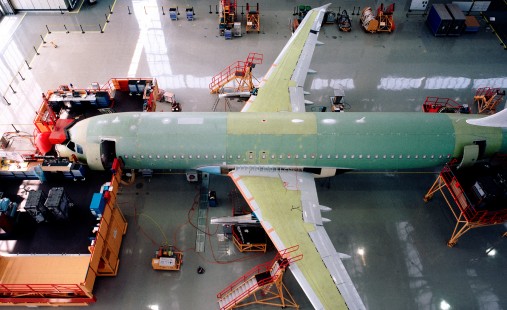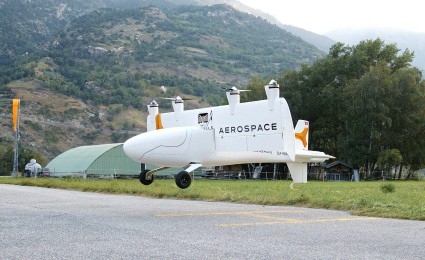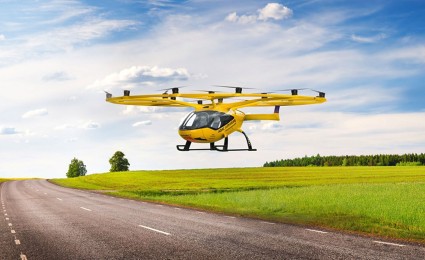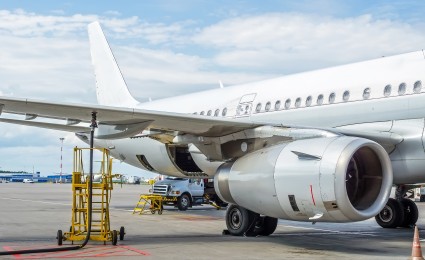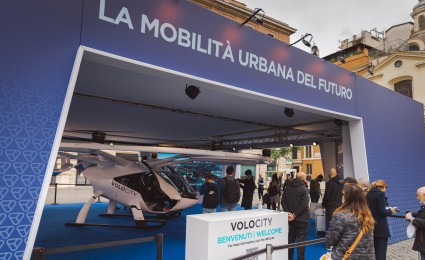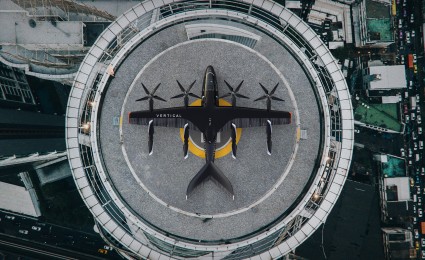The whole aviation industry needs to become sustainable and reach net-zero, which can only be achieved if suppliers are involved.


Sustainable aviation fuels: Key solution to achieving net zero?
By Manfred Hader and Stephan Baur
What role do sustainable aviation fuels play in achieving net zero emissions by 2050?
To become net carbon zero by 2050, the aviation industry is set to focus on implementing sustainable aviation technologies and pursue incremental as well as disruptive change. As part of a study on the readiness of the German and French aerospace supply chain for sustainable aviation, we asked suppliers from the aerospace industry what technology they consider most promising for reaching net zero by 2050. One technology most highlighted is SAF, sustainable aviation fuels. To better understand and estimate the opportunities around SAF, we talked to Dr. Dietrich Brockhagen, the founder and managing director of atmosfair. Atmosfair is a non-profit organization for climate protection, known for carbon offsetting projects and for being at the forefront of supporting and advancing sustainable aviation technologies. Our interview with Dr. Brockhagen sheds light on the technological possibilities of SAF and the question of whether SAF is the future of sustainable aviation.
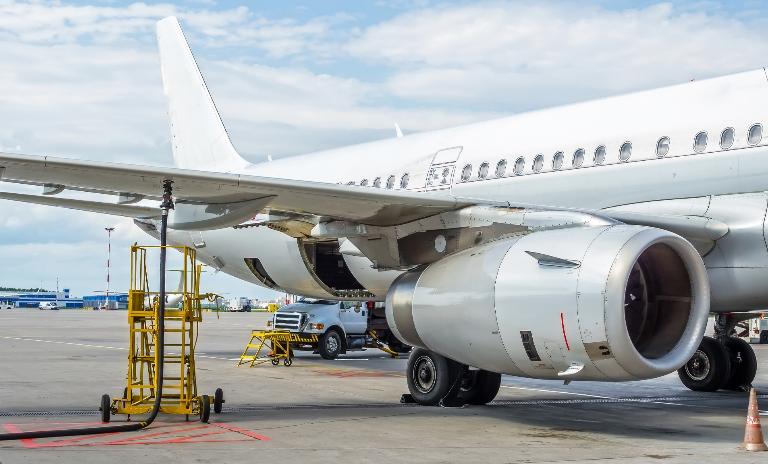
What is SAF and how can it contribute to the net carbon zero goal?
With the goal of achieving sustainable aviation by 2050, alternative fuels are needed to operate conventional aircrafts climate neutrally. SAF is a sustainable alternative to conventional kerosene, not relying on fossil fuel but being integrated into the carbon cycle. With the lifetime of an aircraft being 30 years or longer, every conventional aircraft we put into service today will be operated until 2050 and beyond – and no one will want to take on the financial burden of discontinuing them prematurely. Today, flights are being operated with biomass-based SAF already.
However, the volumes of sustainable SAF will not be sufficient to accomplish the net zero and sustainability target for all air traffic.
To reach net zero, the development of a new leading and holistically sustainable aviation technology must be pursued and advanced in parallel – and based on the degree of efficiency achieved today, hydrogen-based fuel seems to be the most promising one.
"To reach net zero, the development of a new leading and holistically sustainable aviation technology must be pursued and advanced in parallel."
There are different possibilities to generate SAF. What technology does atmosfair rely on?
We distinguish between SAF extracted directly from natural oils – known as biofuels – and SAF produced by synthesis in chemical processes – known as e-kerosene. We call these two sorts of SAF bio SAF and E-SAF, respectively. As every cent can only be invested once, we are careful with intermediate solutions that would cost the money we want to spend on the ones that are more maintainable and sustainable long term. Even though the process is more challenging, we rely on E-SAF through synthesis and distance ourselves from biofuels.
To produce biofuel, oleaginous fruits are cultivated and squeezed. Here, nature almost completely does the job: once the oil is extracted you end up with a substance that already is very close to the crude oil commonly used in current refining processes. The typical biofuel production process is well known and does not pose a challenge from the technical perspective. However, the cultivation of the fruits for biofuel would require a relatively large area of agricultural land in the global south, which inevitably – given current development goals – would lead to a conflict of interest with food production and other ways of land use. For the sake of avoiding land conflicts and not provoking neo-colonialism, we consider biofuels a dead end.
Things get complicated when it comes to the production of synthetic hydrocarbon fuels via a thermochemical route (e.g. the Fischer-Tropsch process). This can either be done by utilizing biomass (biomass to liquid, BtL) or hydrogen and carbon (power to liquid (PtL). BtL works well with very stable and homogeneous biomass inputs (e.g. coal, which is, however, not sustainable) but still poses great technical challenges when you want to utilize more variable inputs like agricultural waste on an industrial scale. PtL seems to be easier to scale to an industrial level, but the technology is still in its infancy. To remain sustainable throughout the entire process, it is important to reuse carbon from the air or biogas, and not from steel or similar sources, which need to be decarbonized themselves anyway.
We are working on a power-to-liquid E-SAF plant to prove the technological feasibility, while at the same time setting a standard that shows how the plant can fully close the carbon cycle and thus become fully carbon neutral.
Besides the technological challenge, what challenges is E-SAF facing?
Even if the scaling challenge can be solved, we still face political challenges. The electricity used in the PtL process for generating E-SAF must come from renewable sources. In order to not compete with the goals of the overall energy transition, every PtL plant would need to be detached from the power grid and operate standalone through its own renewable energy sources. And, as the wind does not always blow and the sun only shines during the day, the operating hours would be greatly reduced. Generating e-kerosene through PtL requires three to four times as much energy input as the e-kerosene stores in energy content. To supply the world's air traffic with e-kerosene, the amount of renewable energy available today would have to double or even triple.
Given that constraint, E-SAF will not be the one solution that enables the achievement of true net zero for air travel. Looking at alternatives such as hydrogen, for instance, the efficiency is higher in the long run. SAF is a transitional aid for conventional aircrafts sold today that will still be operated in 2050 and beyond.
What do you think of the current hype around SAF on the path to net carbon zero 2050?
In 2008, Lufthansa operated the first flights with biofuel between Hamburg and Frankfurt. At that time, there was great enthusiasm and strong interest – people where hyped to rebook themselves on these flights.
Now, 14 years later, we have developed more efficient sustainable aviation fuels, but flights operated with SAF are still in the single-digit percentage range, and that is indeed sobering.
The legislator has introduced quotas: By 2030, 2% of all fuels bunkered in jets must be E-SAF. With a bit of imagination, you can impose an exponential curve on this, and then we might end up in the double-digit range by 2040, by when it might be too late already. In view of the climate targets, we should already be at almost 100% by 2040.
What is lacking is an aviation business model and players behind it for whom the whole action is worthwhile. The airlines themselves have a house full of other problems, so they push the responsibility to the fuel industry. The airlines will be the buyers, not the producers. ICAO had a chance to get it right and missed it in 2016, when it decided on international climate policies for aviation. Instead of setting up an international PtL fund into which all airlines would pay based on the kilometers flown, with the proceeds then used to build PtL infrastructure, ICAO opted for the cheap, cop-out offset program that is CORSIA.
In your opinion, how can net carbon zero be achieved? What would need to be done to support the rollout of sustainable aviation technologies?
The most important aspect in the debate would be to bring the players together in the right way, which ultimately has to be done by the legislator. Breaking out of the current rat race of price competition would give its actors more flexibility and breathing space to invest in the development of sustainable aviation.
Currently, the main problem is that anyone who is a first mover is penalized for their efforts because it is so abysmally expensive. Instead, everyone should be affected equally. The aviation industry worldwide would have to be made uniformly accountable for developing sustainable aviation fuels and technologies. No matter where in the world, every air passenger should take responsibility for every flight they board by paying a levy into a large fund administered by two or three authorities (e.g., the EU, USA, EMEA ...) to be used for coordinating the development of pilot plants and ramping up the technology.
The PtL infrastructure would have to be developed in a coordinated manner, clear technological routes would have to be specified, and both incremental innovation for conventional aircraft and disruptive innovations, such as the further development of hydrogen or electric aircrafts, would have to be driven forward by a unified vision and plan.
Otherwise, the aviation industry will end up in a position of having snoozed for too long and of having relied too heavily on uncoordinated pseudo-solutions.
Register now to receive regular insights into Aerospace & Defense topics.


